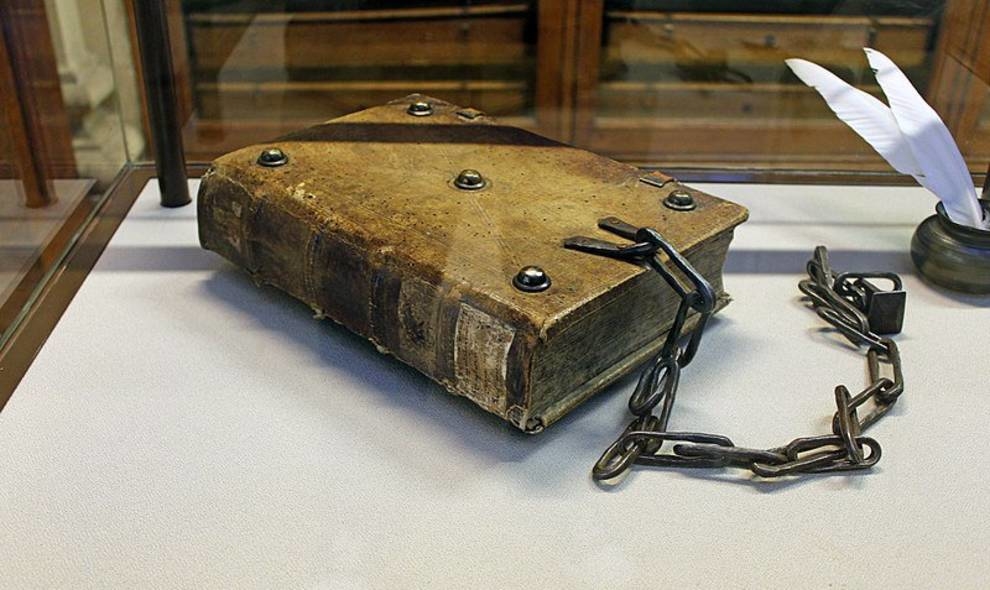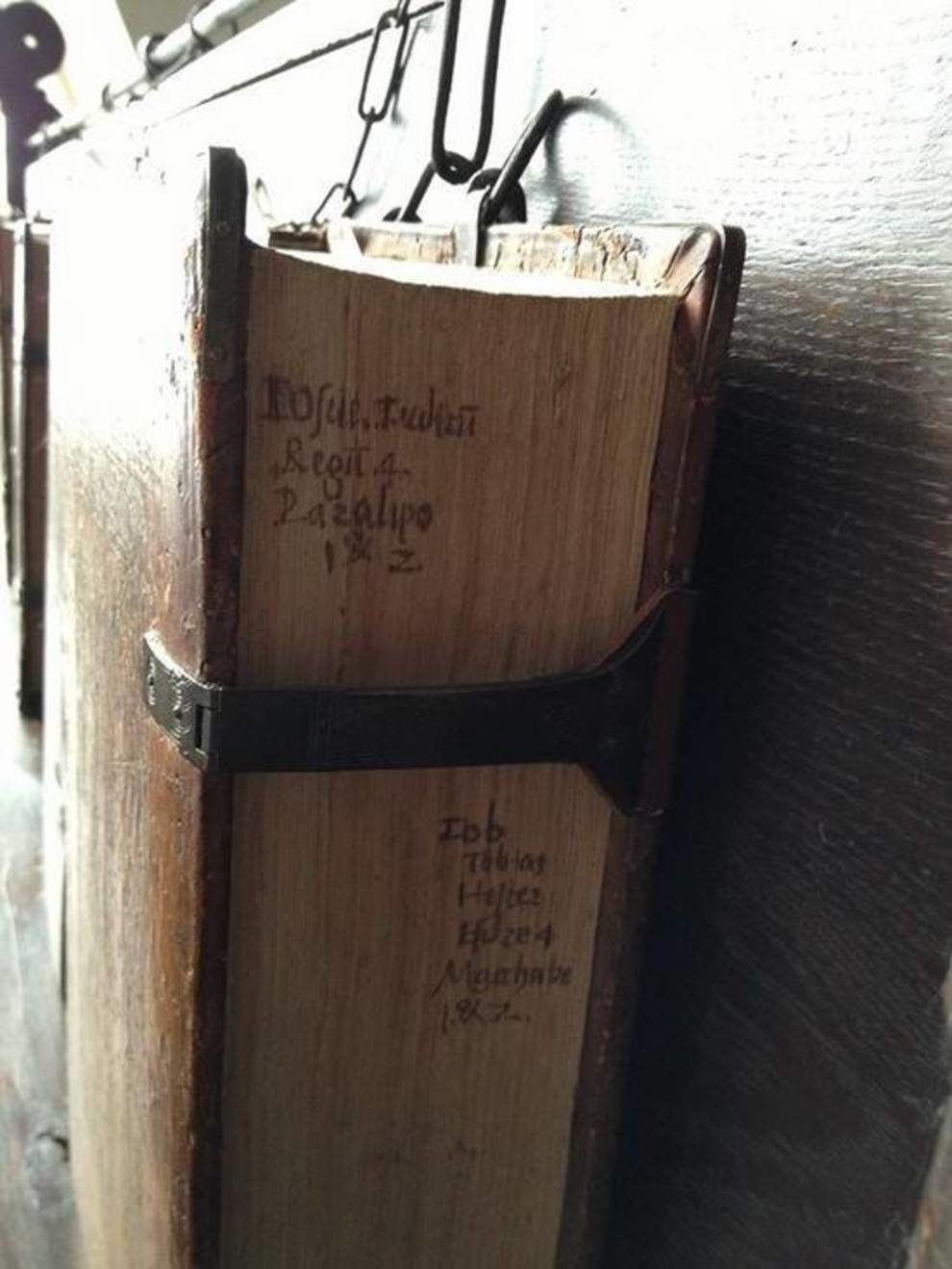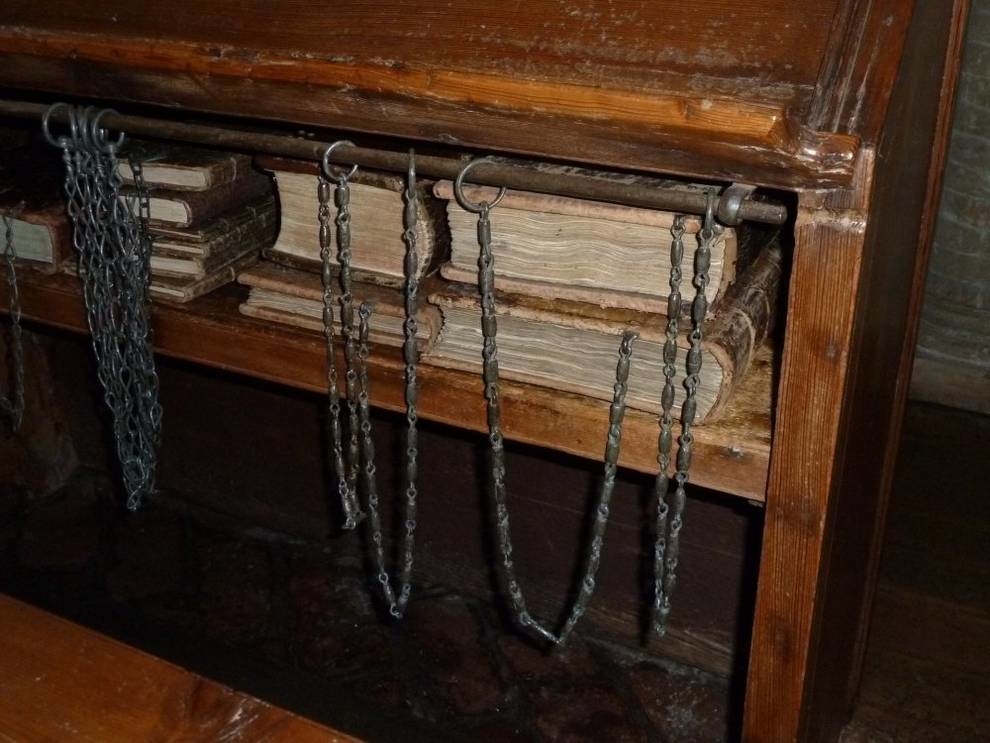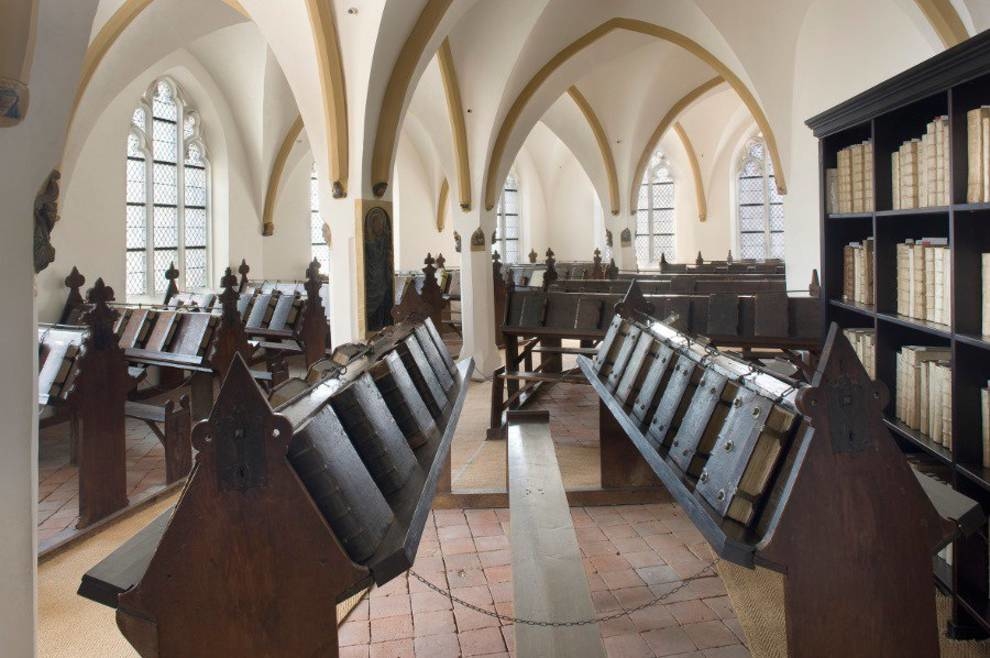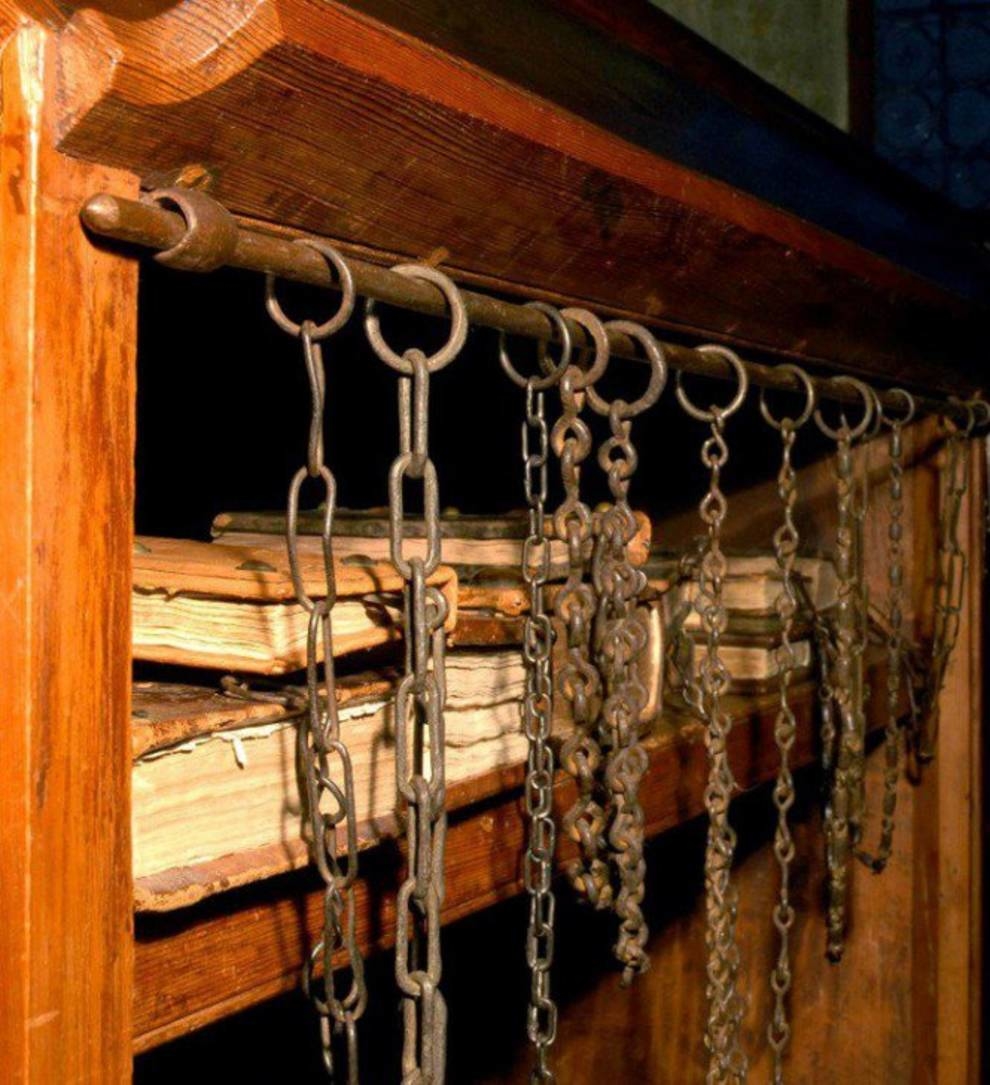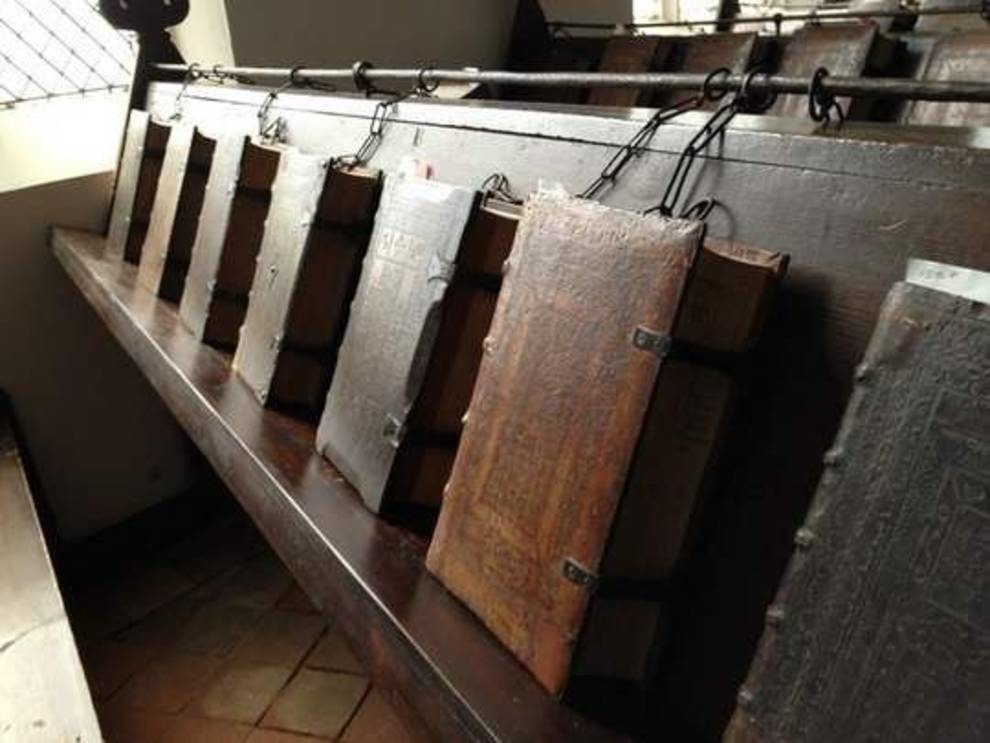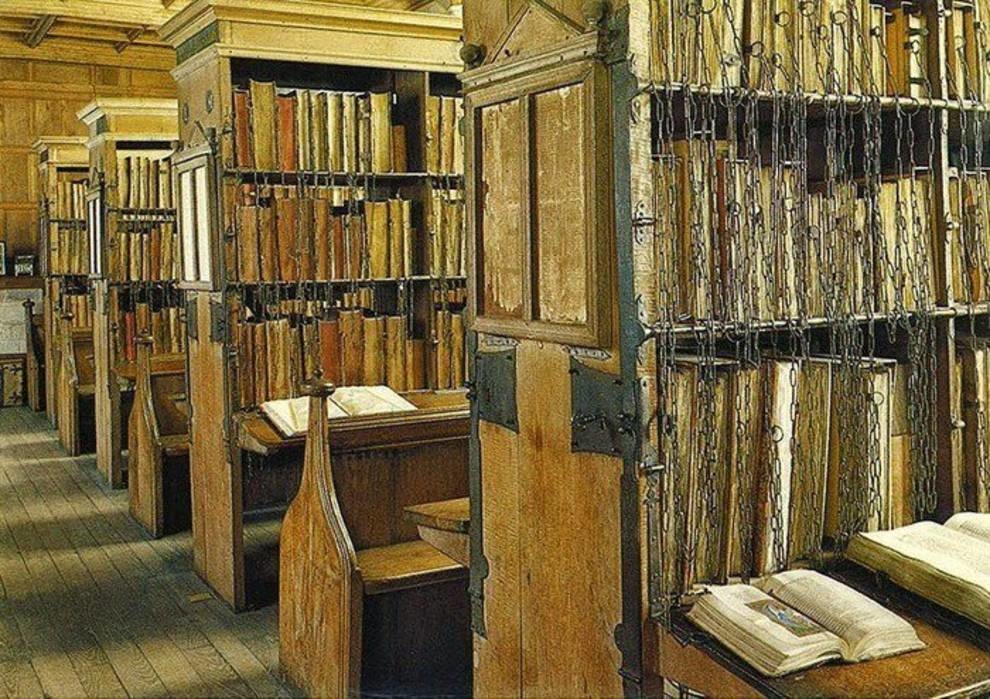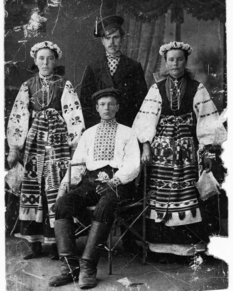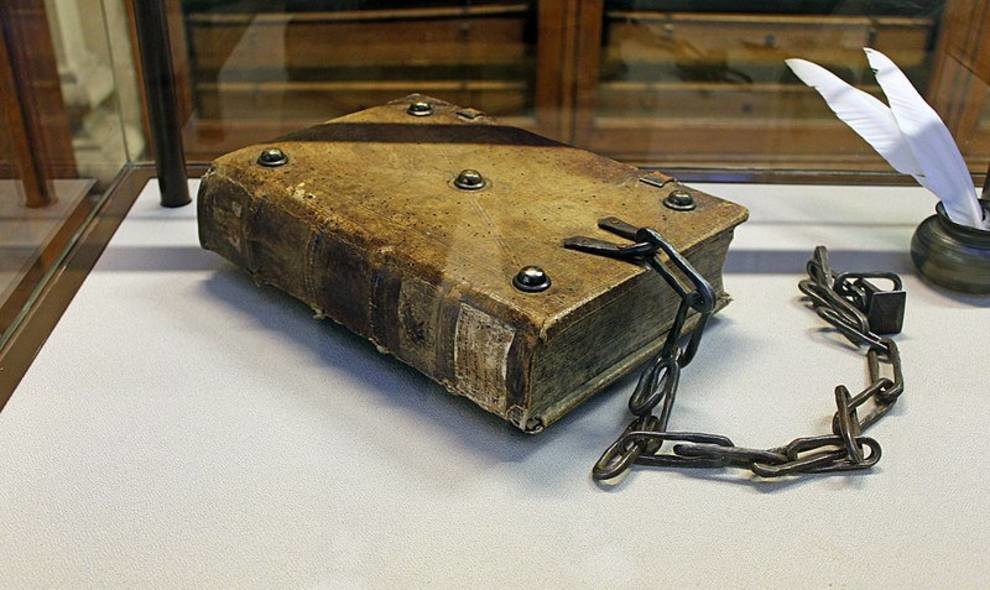
Chain libraries, or why in medieval Europe books were kept under lock and key?

Photo © ru.wikipedia.org
In medieval Europe, the use of chain libraries was practiced - a method of storing books. They were literally chained to the shelves. At the same time, the length of the chains was sufficient so that the books could be read without leaving the shelf.
This practice was typical for the reading rooms of European states, from the Middle Ages to the XVIII century. This was due to the great value of each book. Most libraries did not hand out books, and chains helped prevent the theft of expensive publications.
Chains were connected to books with metal rings. Those, in turn, were attached to the cover. Books on the shelves were placed in such a way that the reader could not see the name of the book, that is, the pages ahead. So it could be easy to take, not entangled in the chains.
The oldest chain library is the Francis Triggge Chain Library, founded in 1598 in Grantham, Lincolnshire. It allowed access to books by persons unrelated to the clergy or science. This library still exists and can be called the forerunner of the modern public library system.
Another example of a library that existed separately from an educational institution, church or monastery was the Marsh Library, founded in Dublin in 1701. The library is still located in the same building in which it was first opened. There are no chained books in the March library: instead, the reader is locked in a cage.
